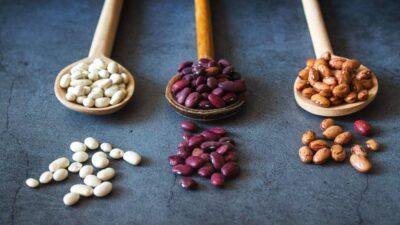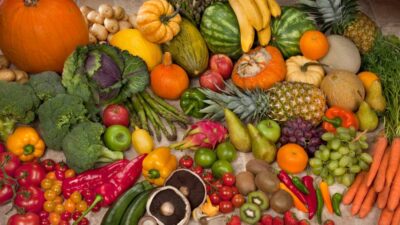The health benefits of 10 glorious grains
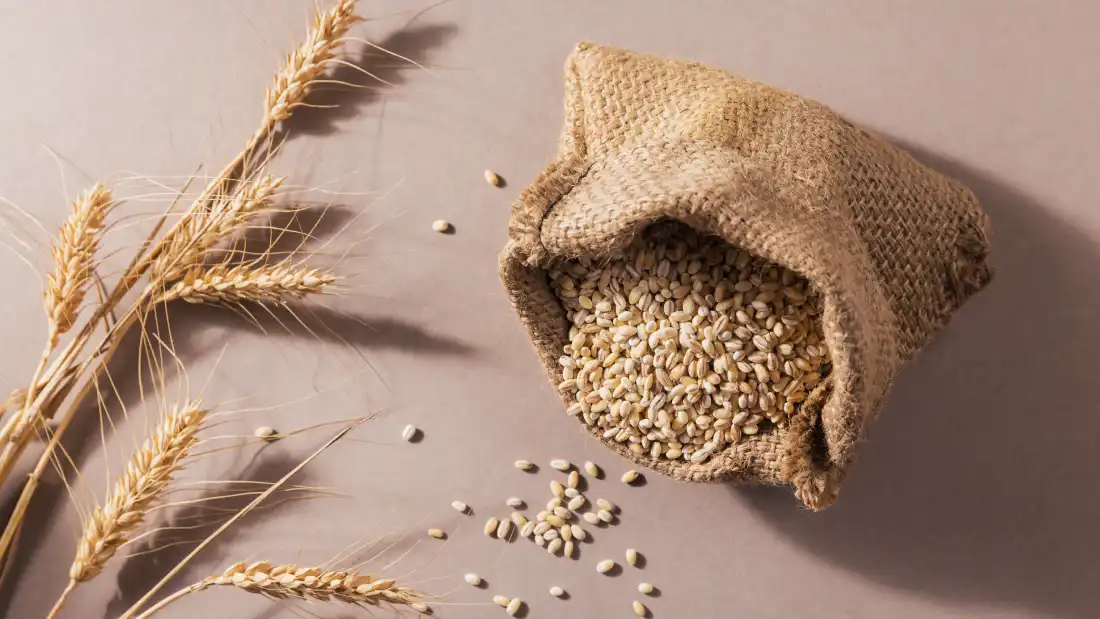
Grains may have been part of the human diet for over 100,000 years – much longer than researchers previously thought. Today they still form an important part of people’s diets around the world. In the West, they get a bad rep because grains like wheat have been refined and used to make junk foods, and many foods labelled ‘wholegrain’ are not necessarily healthy, depending on what else is in them, specifically their sugar to fibre ratio.
But wholegrains in their natural state provide many health benefits such as: a reduced risk of death from inflammatory and infectious causes, lower risk of type-2 diabetes, lower risk of death from cardiovascular disease, lower risk of death from cancer and a lower risk of death from any disease. So, with that in mind, here are 10 glorious grains to give a go.
1. Amaranth
Amaranth has been cultivated for thousands of years and was a favourite food of the Aztec people in Central America. Technically, amaranth is not a grain but a seed. However, it is so similar to grains that it is one of six ‘pseudocereals’ considered to be a wholegrain. Amaranth has a mighty protein content and it’s a complete protein – meaning it has a good balance of all nine essential amino acids, the building blocks of protein. It is also high in manganese which is important for our brain health. It’s also gluten-free, may reduce inflammation, cholesterol and help weight loss.
How to eat: amaranth can be boiled and mixed with other grains and beans in tasty salads, or combined with oats to make porridge. Amaranth flour can be added to other recipes requiring flour, such as pancakes.
2. Barley
Barley was one of the first cultivated grains, grown in Egypt over 10,000 years ago. Hulled barley and pearl barley are the two most common varieties available. Pearl barley has had the hull and the outer coating removed so it’s not considered a wholegrain, although it’s still a healthy option. To get the best from barley, try and use hulled barley as it has only had the inedible husk removed. Barley is high in a soluble fibre called beta-glucan, which has cholesterol-lowering effects and helps regulate blood-sugar. It’s also a great source of magnesium, manganese and selenium.
How to eat: barley can be boiled and added to salads, soups and stews, as a side, or in any meal where you’d usually use other grains, such as rice. Add pearl barley to a leek and carrot soup to make a hearty autumn supper – soaking the grains first can reduce cooking time.
3. Brown rice
Rice has been cultivated in Asia for thousands of years and is a staple food for over 3.5 billion people around the world, particularly in Asia, Latin America and parts of Africa. When faced with the question: “brown or white rice?” you should almost always choose brown. White rice might be good for very young children, or adults just before a physical workout, due to its digestibility and quick-release energy, but brown rice has much more nutritional value and has a slightly nutty flavour. It contains significantly more thiamine, magnesium, niacin, vitamin B6, folate, riboflavin, potassium and iron than white rice!
How to eat: brown rice can be boiled and used as a base for curries, chilli non-carnes, stir-fries and grain bowls. Mixed with mushroom or chopped vegetables, wholegrain rice can be used to stuff peppers and topped with melted vegan cheese for a hearty meal.
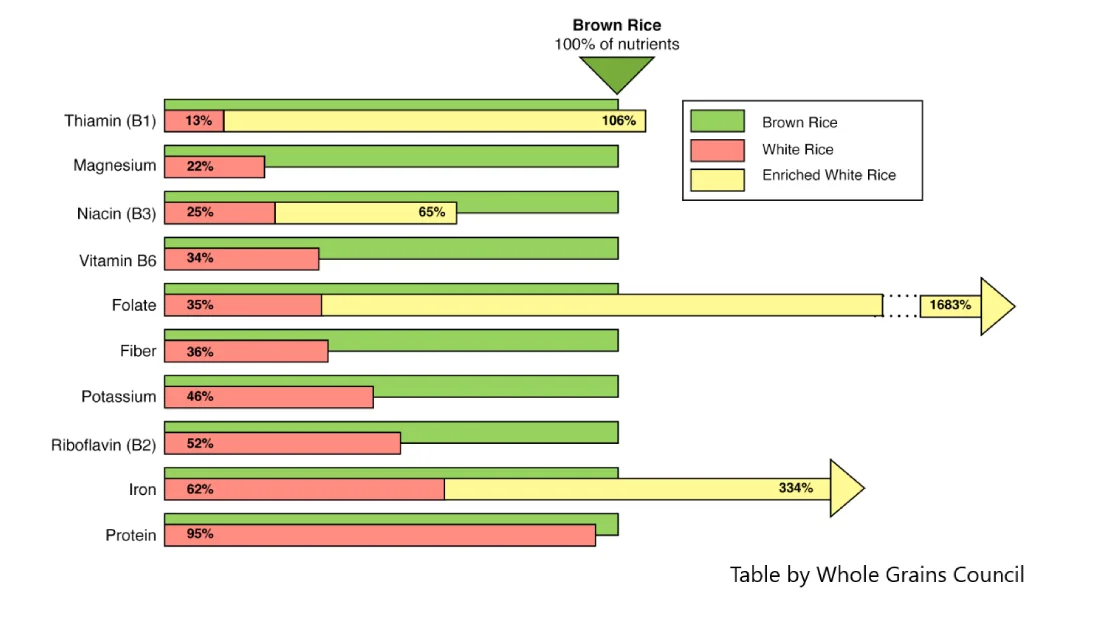
4. Millet
Millet became a popular grain across Africa, Asia and Europe due to its resistance to drought. Millet is gluten-free and therefore popular among people unable to eat gluten. However, even if you love and tolerate gluten, millet is an excellent addition to your diet – it’s very low in fat, a good source of some B vitamins and important minerals, such as magnesium, phosphorus, zinc, copper and manganese. It also contains small amounts of iron, potassium and selenium and some powerful antioxidants. One study also found that replacing a rice-based breakfast with a millet one lowered the postprandial (post-meal) blood glucose levels in people with type-2 diabetes, making the grain a good option for the management of diabetes.
How to eat: millet can replace rice in many dishes and may be quicker to cook making it a great option for a quick supper. It can be enjoyed as a porridge or tossed into salads and even used to give healthy cookies a crunch.
5. Oats
The cultivation of oats dates back to the ancient civilisations of Europe, the Middle East and Asia around 2,000 BC. The most whole form of oats is oat groats but these take a long time to cook so rolled or steel-cut oats are a more practical option. Instant oats are the most processed, and although they are not inherently unhealthy, they often have added sugar and flavourings. Eating oats has many health benefits. They are protective against cardiovascular disease by lowering cholesterol, the beta-glucan in oats helps manage blood-sugar and oats can help reduce obesity. There is also evidence that compounds in oats have anti-cancer properties as well as regulating the immune system and fighting oxidative stress… the list goes on. There are oat-so-many reasons to start your day with a bowl of porridge or overnight oats!
How to eat: oats can be used in muesli, porridge, flapjacks, cookies, muffins and many other healthy baked goods. Add them to the topping on your fruit crumbles or crumble slices for an healthy boost to these sweet desserts.
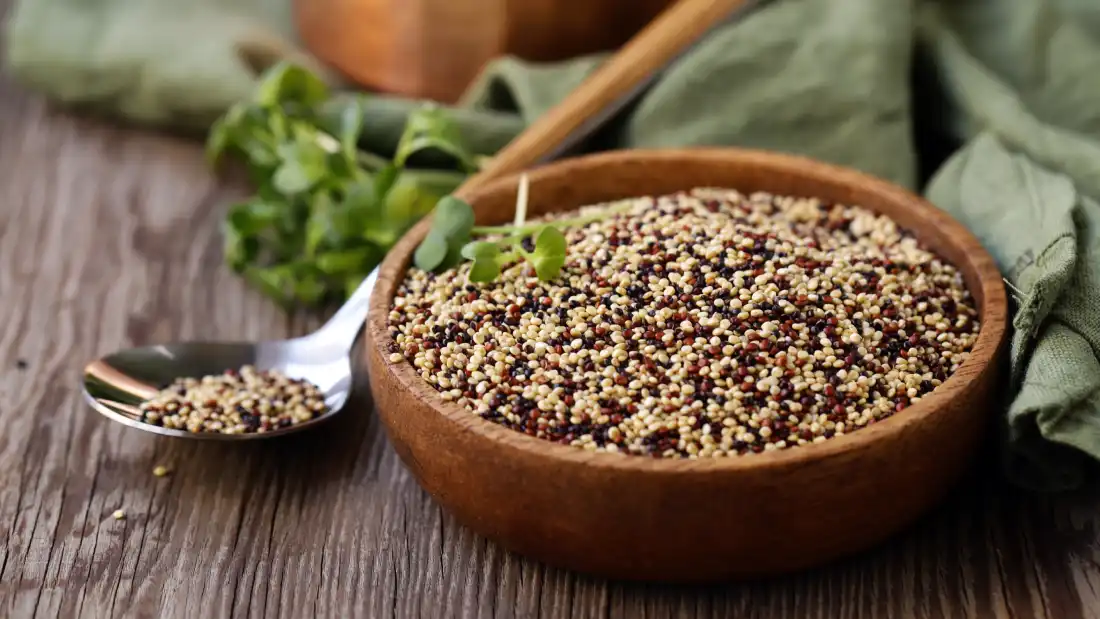
6. Quinoa
Quinoa comes from the Andes and was cultivated three to four thousand years ago. Like amaranth, quinoa is actually an edible seed but is close enough to a grain to be counted here. The Andean people considered the golden grain to be a gift from their gods and a sacred plant because of its high protein content and excellent balance of essential amino acids. Quinoa has a large variety of antioxidant compounds, such as quercetin and kaempferol, which have beneficial effects in humans including being anti-inflammatory, anti-diabetic and anti-carcinogenic.
How to eat: quinoa can be boiled and used in place of rice, in salads, grain bowls and stuffed peppers. As it can lack flavour, it can be a good idea to cook it in a stock. Placing your cooked quinoa on a baking tray in the oven for five to 10 minutes can give it a wonderful crunch! Try it in a salad made with roast, seasonal vegetables topped with vegan feta and chopped nuts and seeds.
7. Rye
Rye is a grain most commonly used to make rye bread (also known as pumpernickel), which became very popular in Northern Europe and came to Great Britain in the Middle Ages. The popular crispbread which dominates supermarket shelves originated in Sweden. A study comparing rye and wheat found that rye was more successful in reducing body weight, it improved insulin sensitivity and reduced cholesterol. Other studies have shown that rye bread and rye porridge keep you feeling fuller for longer compared to wheat bread.
How to eat: rye can be cooked and added to salads and grain bowls, but it is most commonly eaten as rye bread. Try having a Scandinavian-style breakfast of pumpernickel and vegan cheese or mashed avocado with sliced cucumber and tomatoes.
8. Sorghum
You might be surprised to hear it, but sorghum is the fifth most-produced grain in the world and it is particularly popular in Africa, where it is an essential part of the diets of many people. Wholegrain sorghum is highly nutritious. One hundred grams of sorghum contains 11 grams of protein, three grams of fat, 72 grams of carbohydrates and seven grams of fibre – which is about one-quarter of your daily recommendation. It’s also a great source of B vitamins, magnesium, potassium, phosphorus, iron and zinc, as well as antioxidants which can reduce oxidative stress and inflammation in our body.
How to eat: sorghum can be boiled and eaten like porridge, added to soups, stews, salads and grain bowls, added to baked goods and even popped like popcorn. It can be used to replace rice in many dishes, try using it instead of rice in a risotto or paella.
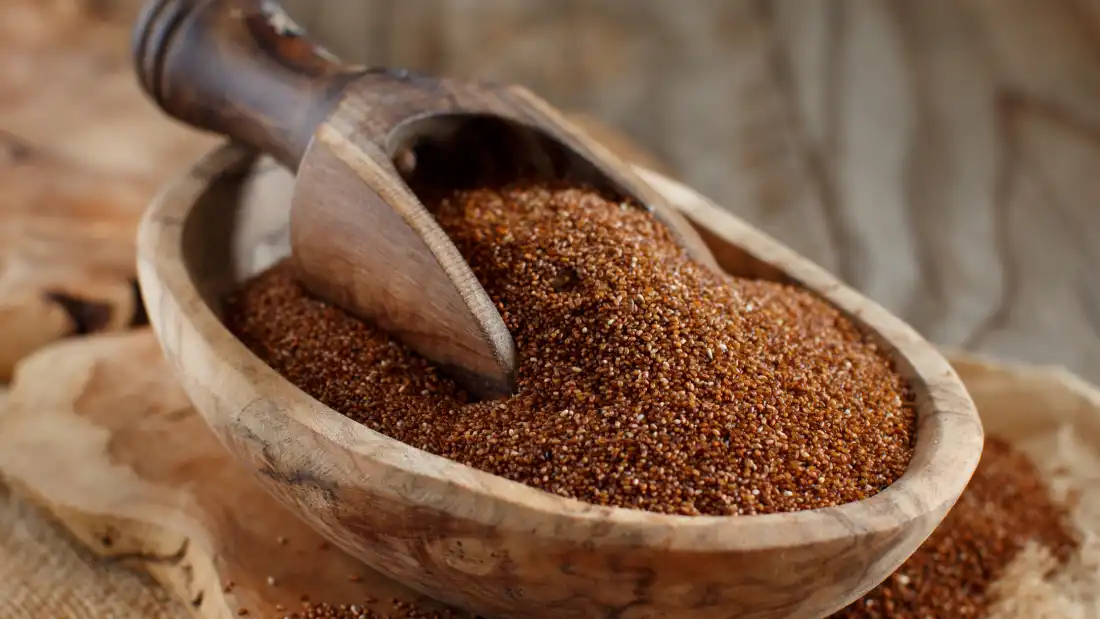
9. Teff
Teff is the world’s smallest grain but despite its diminutive size, is often considered a superfood due to its incredible nutritional profile. One hundred grams contains a whopping 400 per cent of your daily requirement for manganese, 90 per cent of your copper requirements, 44 per cent for magnesium and 42 per cent of your iron requirements. Unlike many other grains, it is also very high in vitamin C. Teff is a great addition to the diet of pregnant women as a study of Ethiopian women found that those who ate it frequently had a lower risk of anaemia.
How to eat: teff can be cooked and eaten like quinoa or rice, used as a porridge or added to salads and grain bowls. Teff can be used to make pancakes, bread and other baked goods that use flour.
10. Wheat
Wheat is one of the oldest and most common grains grown around the world. In recent years it has picked up a bad reputation, mainly because its refined form is used in many junk foods, and it contains gluten, which is harmful to those with coeliac disease. However, if you don’t have coeliac disease and you stick to wholegrain wheat, it is a good source of carbohydrates, protein, B vitamins, fibre, and phytochemicals. Consuming wholegrain wheat may reduce the risk of heart disease, type 2 diabetes and certain types of cancer so it should not be shunned by those who can eat it.
How to eat: wholegrain wheat (wheat berries) can be boiled and be added to soups, stews and salads. Wholemeal bread and wholewheat pasta, for example, provide many more nutrients and offer more health benefits than their white counterparts.
Grains have been part of the human diet for thousands of years and with good reason. Archaeological evidence shows that our Stone Age ancestors ate a largely plant-based diet including, for example chenopodium seeds – a relative of quinoa. There are so many grains to choose from and they all have incredible health benefits. Just beware of processed foods labelled ‘wholegrain’ (breakfast cereals, breads and baked goods are the usual suspects) when the wholegrain may only make up a small percentage of the final product.




